Bundle Asetek Invicta
Benefits
- Immersive force feedback with the 27 nm of the base
- Hydraulic crankset for pressures up to 100 bar
- Steering wheel with carbon fibre finish and open handles
Disadvantages
- Brake pedal very hard to use
- The steering wheel in this bundle is the same as in the Forte range
Our rating: 9.6/10
Asetek has entered the sim-racing race, and the brand aims to compete with segment giants such as Simagic, Fanatec and even Simucube. It has to be said that this mainly watercooling company has extensive experience in the field of CPU and/or GPU cooling. In fact, this brand dominates the segment with its CPU and GPU block patents, heat sinks and pumps.
Virtually all AIO watercooling manufacturers, such as Corsair, NZXT, Be Quiet and many more, use Asetek patents and designs. And that says a lot about the brand’s skills. Nevertheless, the sim-racing field is a little more complicated than watercooling, I think, and Asetek still wants to get a share of the market.
The Danish brand currently offers 3 ranges of sim-racing peripherals: The Prima, Forte and Invictafor entry, mid-range and high-end respectively. Each range features a Direct Drive base, pedals and steering wheel. Finally, for the steering wheels, Asetek currently offers 2, but from what I’ve been able to dig up on the net, the brand is said to be developing an Invicta one. In what follows, I’m going to introduce you to the ultra-premium devices offered by the Danish brand.
Main and technical features of the bundle
- Direct Drive base developing 27 nm of torque
- Forte steering wheel with 29 cm diameter and open handles
- Hydraulic crankset with THORP technology for pressures up to 100 bar
- 22-bit encoder based on
- 12 buttons, 6 rotary switches, 2 switches and 3 encoders on the steering wheel faceplate
- QR on the back of the steering wheel identical to that of Simucube
- Crankset available in S version and a “Clutch” kit for an extra clutch pedal
Design
So, design. I’ll start with the one at the base. The Invicta’s design is virtually identical to that of the Forte, only larger, which is to be expected given the 27 nm of torque it produces. The body is made entirely of aluminum, with fins all over to help cool the engine. On the front, the cover features the same QR as Simucube, with slot installation.
For the steering wheel, it’s the same as for the Forte range, as Asetek hasn’t yet released one for the Invicta, but they’re working on it. The design is nice, with carbon fiber on the faceplate, all the controls on the sides and large, open handles.
Let’s finish with the pedals, the second piece of resistance. Overall, we can see that the Invicta crankset is inspired by the Forte, with beautiful aluminum pedals, a superbly finished plate and bright orange accents on some parts. It’s just gorgeous, and as I mentioned on the Forte bundle test, this Invicta crankset is available in a Pagani Huayra R version!
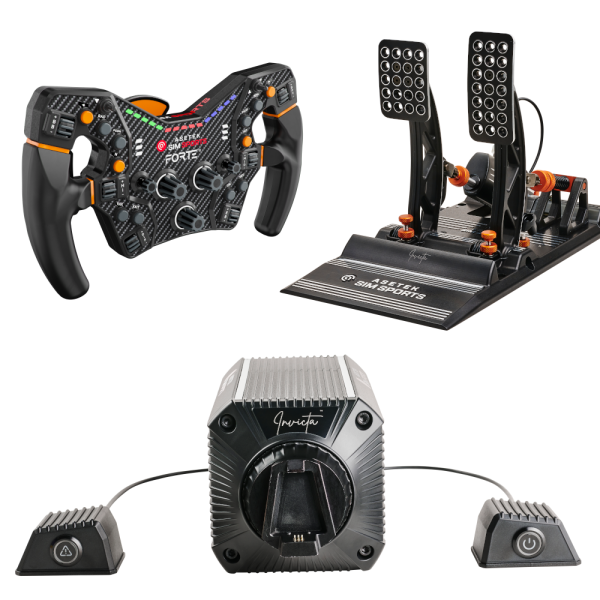
Customized assembly
The Invicta base offers a wide range of mounting options, either from below or from the front. Most chassis will take this base’s fastenings into account, but try to find one that’s ultra-strong, as the little jewel puts out 27 nm of torque. If you opt for front-mounting, you’ll need a bracket that allows this, or you can drill holes directly into your chassis at a spacing of 8.7 centimetres.
The Invicta crankset is also mounted on a frame, and a very rigid one at that. The hydraulic system of this device can handle up to 100 bar of pressure, and that’s just enormous. You can attach the pedalboard’s main plate directly to the frame without too much trouble.
And finally, the Forte steering wheel slots directly onto the QR, which looks very similar to the Simucube one. And to be honest, it’s pretty much the same, because the two companies collaborate with each other, so to speak. In reality, it’s more like a license to use Simucube’s plans, designs, software and a whole lot of other good stuff. In any case, the steering wheel goes straight into the slot and stays there, warm and snug.
Manufacturing and finishing
The Invicta crankset and chainstay are built from highly premium aluminum, with CNC-machined parts for the pedals. It’s ultra-premium, superbly well-finished, and flawless throughout. The only slightly negative aspect of the base is the use of plastic for some of the covers, notably the front and rear ones. It doesn’t look super-premium I must say, even it’s only caches. So…
The steering wheel is based on a composite structure. In other words: it’s plastic reinforced with carbon fiber. It’s nice to look at, especially the back of the Forte steering wheel, it’s solid in the hands, but it looks cheap for a steering wheel that costs an arm and a leg. Nonetheless, the finish is top-notch, with a device that’s been meticulously crafted throughout, except perhaps for a few controls that stick a little in use.
Getting started with the bundle
The grip on the Forte steering wheel is really excellent. The wheel is open at the bottom, which means the grips don’t meet the faceplate, and this greatly helps the overall ergonomics of the steering wheel. What’s more, the diameter of the grips is quite large, compared to the competition’s rather skinny steering wheels, which enhances grip and ergonomics.
All buttons are well positioned, as are the rear paddles. The only problems with this wheel are a few buttons that are hard to use, and the fact that the wheel has only 2 paddles at the rear limits its use in many sim-racing disciplines.
As for the Invicta crankset, it’s pretty much the same as on the Forte: the pedals are almost at 90°, which isn’t exactly comfortable over the long haul, unless you have a F1-style riding position with your legs raised. The pedal settings aren’t much to write home about either, and we end up with a device that won’t please everyone in terms of ergonomics.
Sensations during play
The base
First of all, it’s imperative to spend some time on the Asetek software to get the base set up properly, whether in terms of power, angle of rotation, FFB, etc. This is the only way to get the most out of your Asetek. Let’s not forget that this one develops 27 nm of torque; it’s powerful, and this base can easily hurt you, even very badly.
Once you’ve found your power settings, it’s pure bliss to use the Invicta base in sim-racing. You’ll feel every detail produced by the game’s physics engine, and it’ll all be conveyed to perfection behind the wheel, be it light and very light, big and very big, subtle, and everything in between. It’s pure joy to use this base in sim-racing, and having 27 nm of torque, which you’re unlikely to use to 100%, eliminates clipping from your virtual racer’s life, and that’s priceless as far as I’m concerned.
The steering wheel
Let’s move on to the Asetek Forte steering wheel. Its rectangular shape makes it very ergonomic on all Formula and GT/endurance titles. It’s just perfect as far as I’m concerned, especially with the fact that the handles are open at the bottom, and big compared to the competition.
This steering wheel is heavy (around 1.4 kg), even with an all-composite structure made of carbon fiber and reinforced plastic. However, you won’t feel its weight at all when cornering, as the base model delivers 27nm of maximum torque. This is also the case with the Forte base, which develops 18 nm of torque, so there’s no impact from the wheel’s rather heavy weight.
On the other hand, the fact that there are only 2 paddles at the rear will greatly limit its use, whether in F1 or GT. You won’t get Launch Control, clutch and all the rest with this steering wheel, and that’s a real shame. What’s more, some of the controls, especially the switches, are hard to use and sometimes catch on the run. I don’t know whether it’s a problem of tolerances or badly machined parts.
The pedals
Finally, the Invicta pedalboard with THORP technology. For the gas pedal, it’s a fairly simple pedal that tends towards smoothness. Sensations are linear, with little resistance from the mechanism. At the same time, it’s an accelerator pedal, and we just want it to be reliable, precise and responsive. Invicta’s is, without the slightest problem.
The clutch pedal is simple, but more complicated than the gas pedal. The clutch uses a standard two-stage system, as found in the competition. It works great, it’s reliable thanks to the Hall sensor and it’s quite flexible, while offering a fair amount of resistance adjustment. I really liked this pedal, but it’s sold separately, and costs almost as much as a quality Load Cell pedalboard.
And the brake is a hydraulic system capable of withstanding no less than 100 bar of pressure. The THORP is also a two-stage system, with the first stage being rather light and short-stroke, but providing some braking. Think of it as moving the brake pads closer to the discs in a car. And when you reach the second stage, namely the hydraulic system, the pedal travel will come to a virtual stop, and the more pressure you apply to the brake, the more force the car will put into the braking system, leading the vehicle to lose a great deal of speed. I’ll say it now: it’s an ultra-realistic feeling, especially if you’ve done some real racing sessions.
Compatibility
Obviously, the Invicta bundle is only compatible with the PC/Windows platform at the moment, but the manufacturer is planning models for consoles. As far as sim-racing titles are concerned, I’ve been able to test AC, ACC, rFactor, iRacing, F1 2022 and a host of other racing games that are both sim-arcade and simulation, and I haven’t noticed any problems.
Value for money
This is going to hurt. The complete bundle costs around €3,100 on the Asetek website, in stock configurations, i.e. without clutch pedal (over €300) or model S bottom bracket (around €60 extra), and without base brackets (between €75 and €160). Value for money is quite good in my opinion, but greatly penalized by a composite steering wheel.
My verdict
I can only recommend this bundle for professional or seasoned sim-racing drivers, and especially those with a healthy bank account. The base is pure bliss and so is the crankset, but you need an F1 chassis to get the most out of it, because of the vertical position of the pedals.
Unlike the Forte bundle, I’d recommend you take the whole Invicta without the slightest hesitation if you have the means (financial and technical). Everything about this bundle is perfect, except perhaps the steering wheel materials, but given the sensations it delivers, you’ll soon forget all about that.

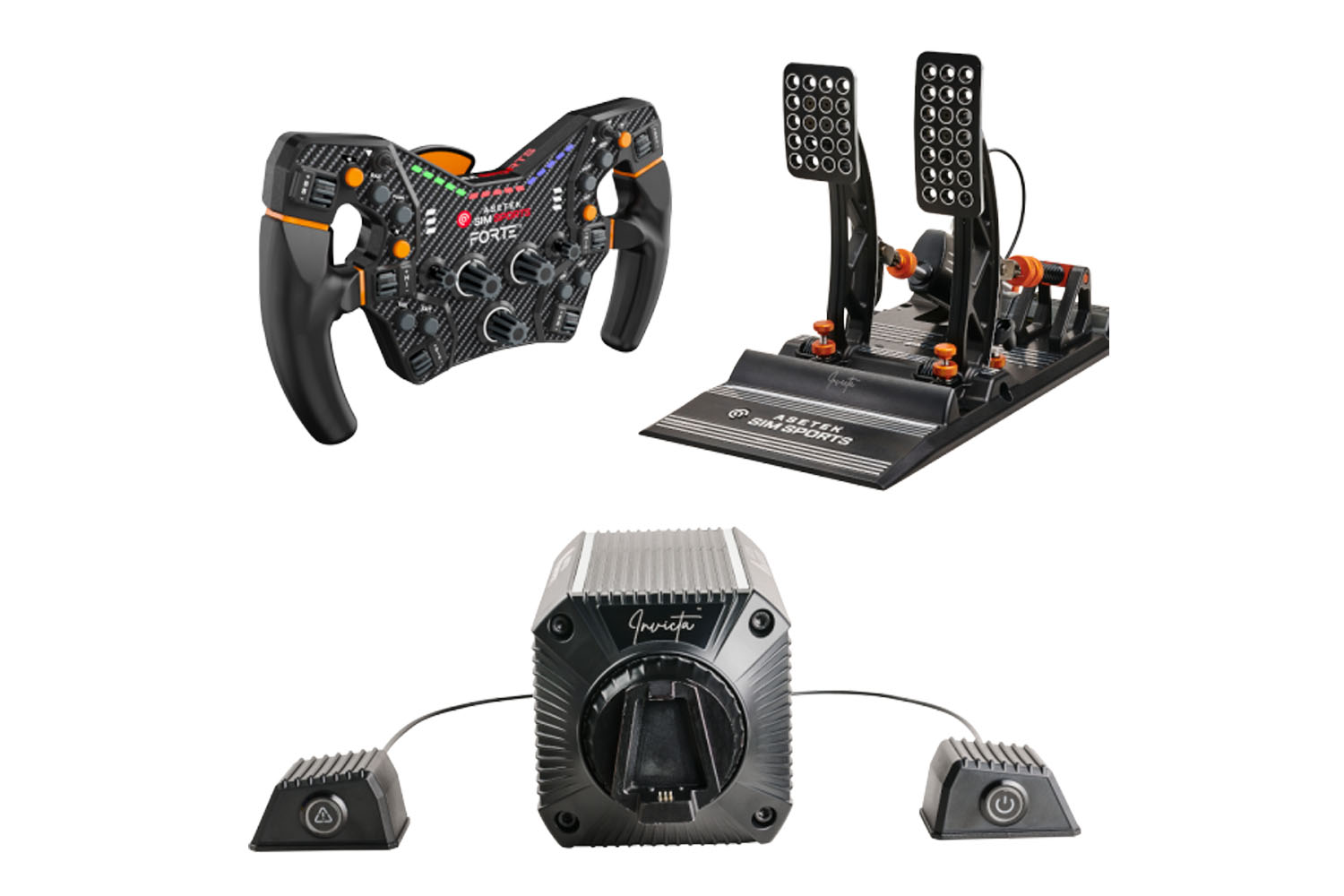
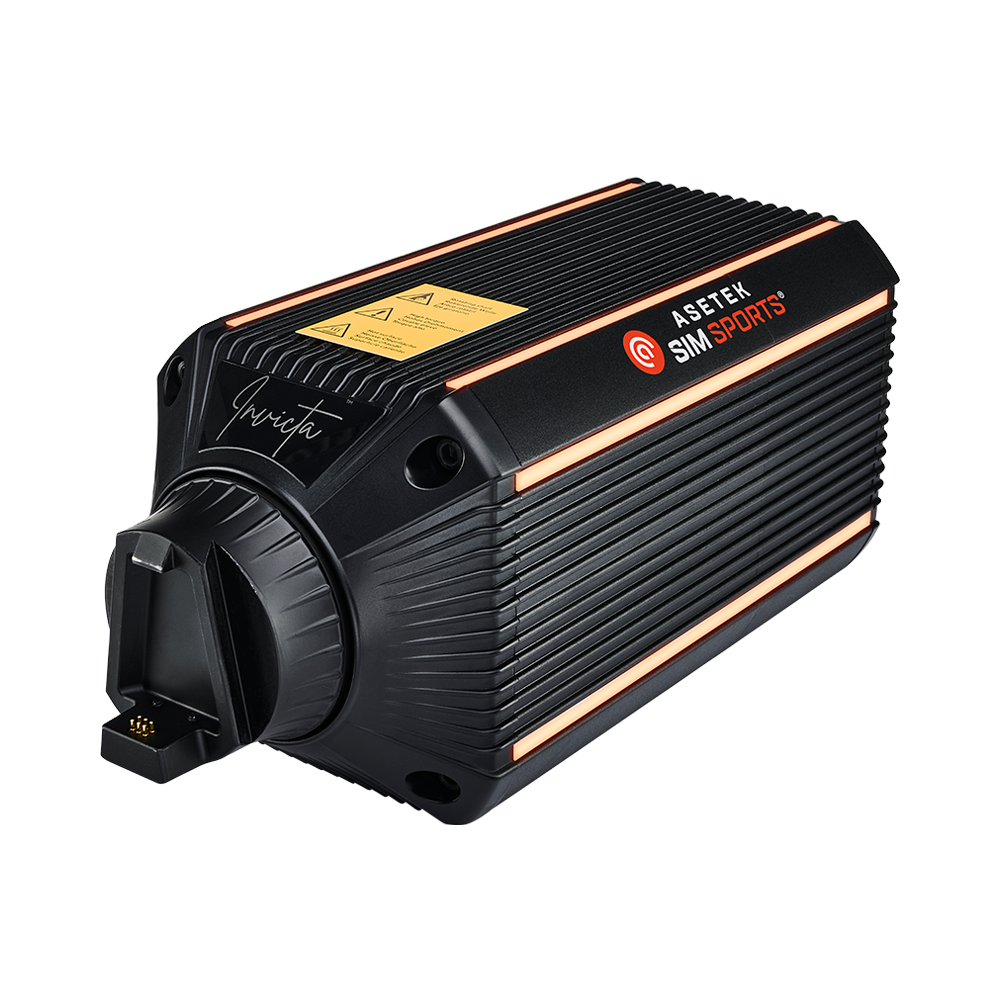
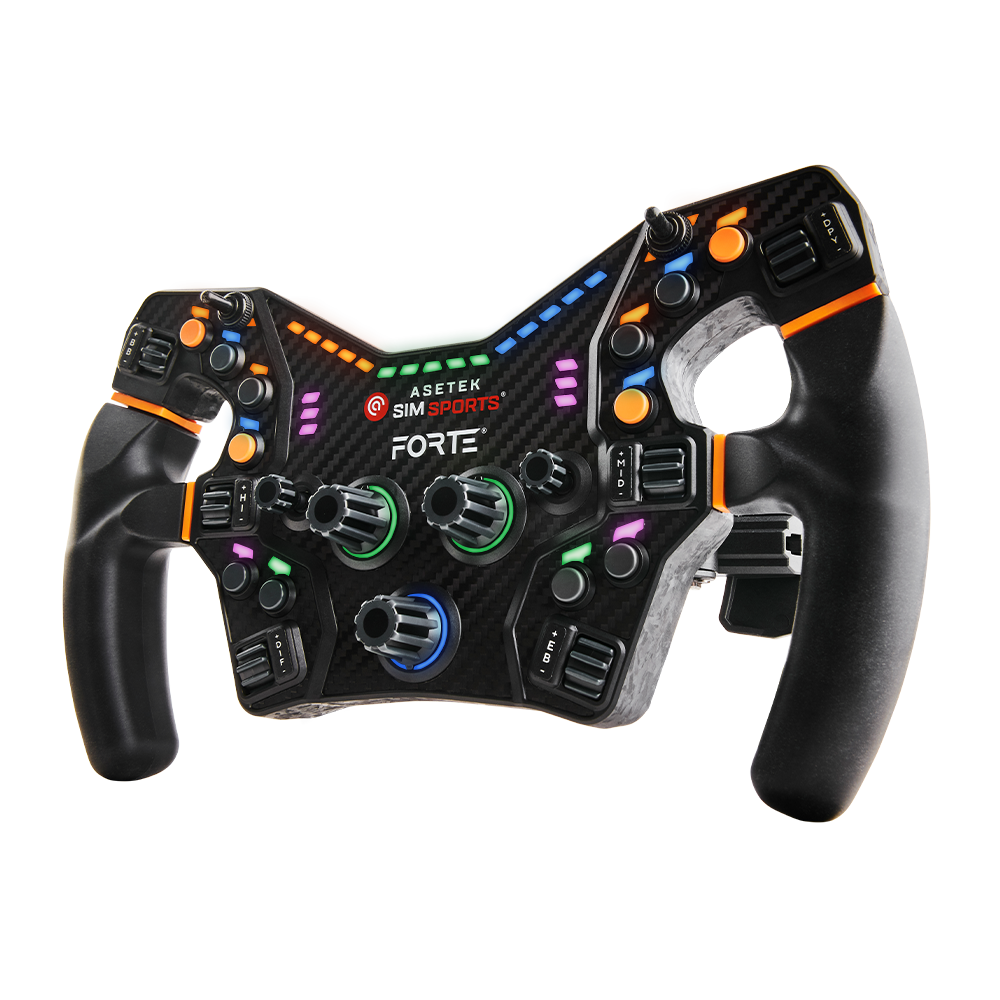
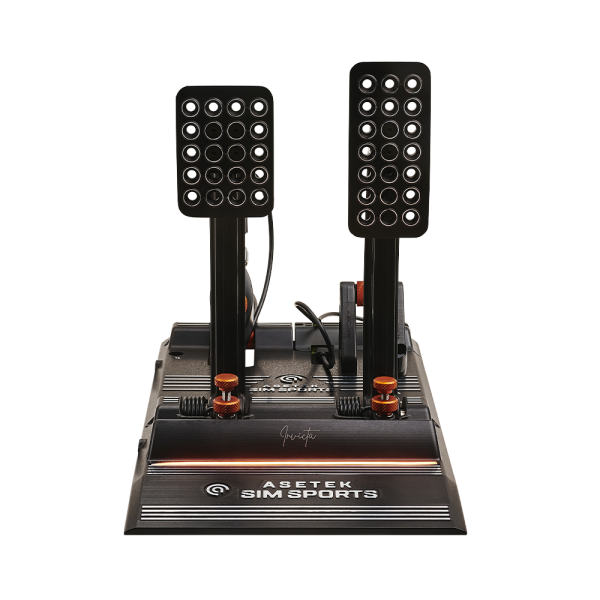
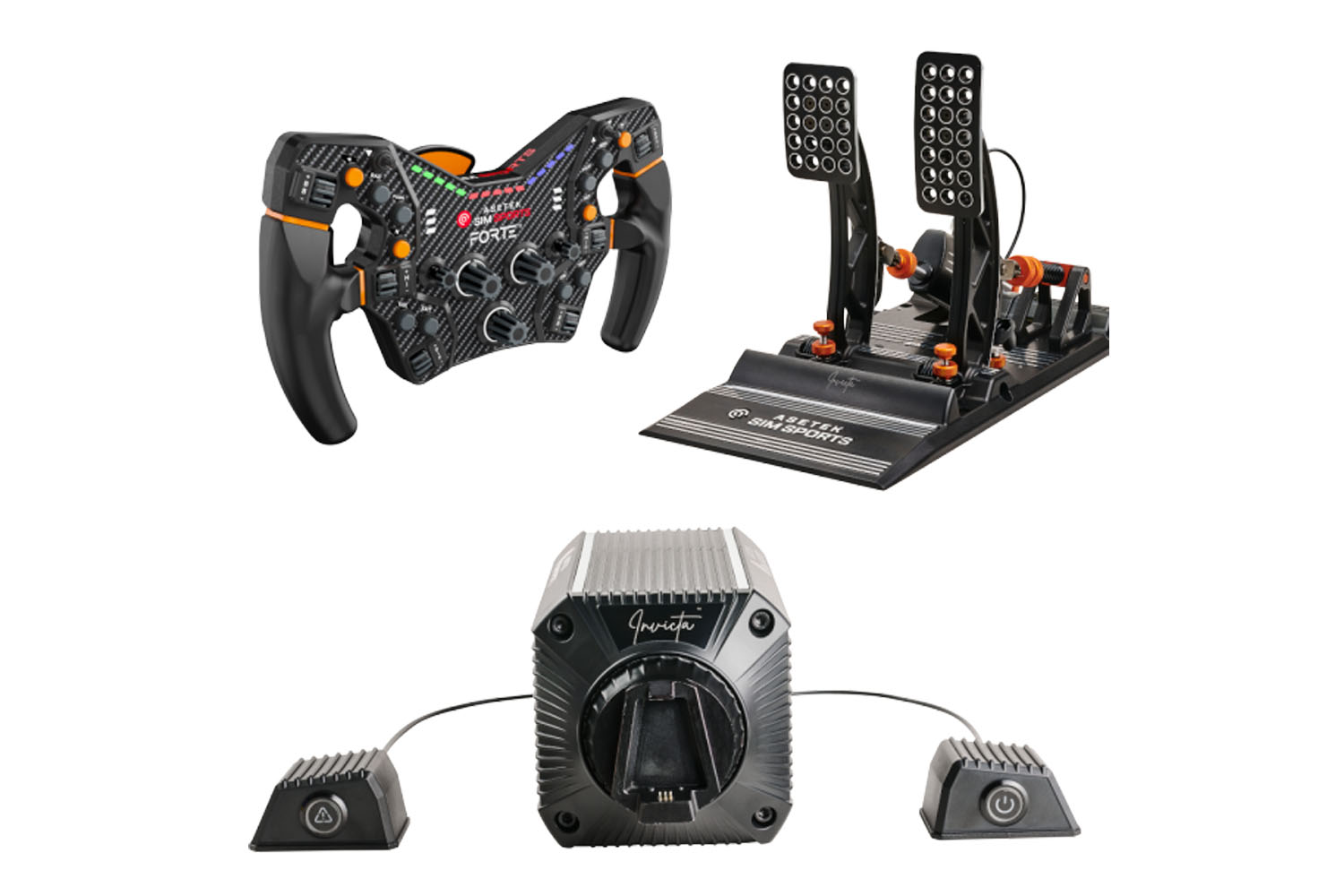
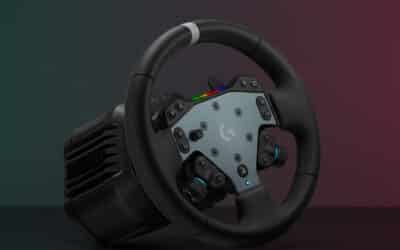
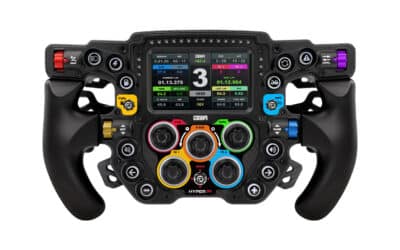
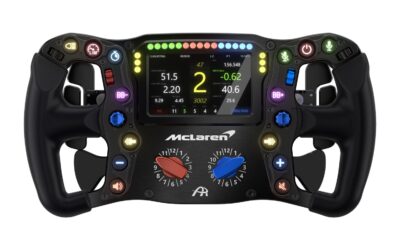
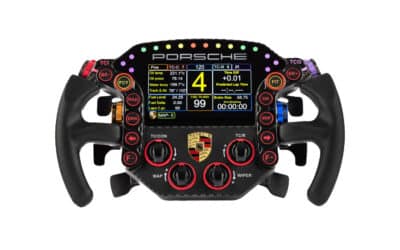
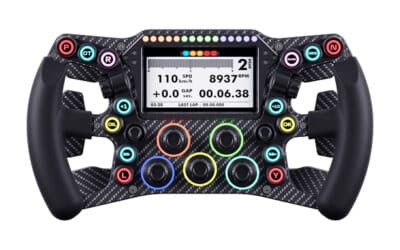
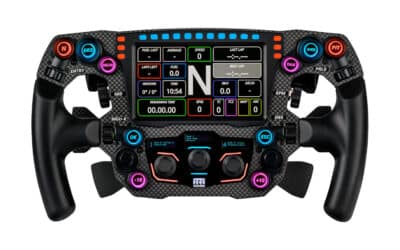
0 Comments